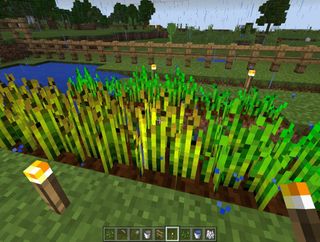
Creating sustainable farms in Minecraft is an important factor of long-term survival. Here's all you need to know about getting a farm set up and keeping it alive in Minecraft: Windows 10 Edition.
- Collect seeds
- Find some farmland
- Till the soil
- Water your crops
- Fertilize your crops
- Protect your crops
- Give your crops light
- Know when to harvest
- Farming other crops than wheat
Collect seeds
In order to plant a farm, you must first collect seeds from the natural environment.
Find a patch of tall grass and start clicking. Not every piece of grass you hit will produce a seed, but keep at it and you'll soon have a collection of seeds.
Once you have a farm up and running, wheat you harvest will usually provide between one and three seeds — sometimes no seeds — so that you can replant the crop.
Find some farmland
The ideal spot for a farm is an open, grassy area close to water. As long as your farmed dirt tiles are within four blocks of water, they will become hydrated and will grow much faster. Ensure your farmed tiles are also at the same level or one level below water.
Keep in mind you can also transport water using a bucket. If you'd like to play it safe and stay within your shelter, use this method to create an indoor farm.
Till the soil

Your next step is to start tilling the soil with a hoe. If you haven't crafted one yet, now is the time.
Get the Windows Central Newsletter
All the latest news, reviews, and guides for Windows and Xbox diehards.
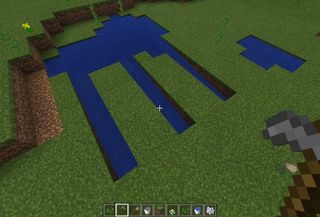
You might also want to dig a few trenches extending out from the water source. Creating rows of crops without any other crops directly next to them, as shown above, will deliver the best growth rate. You also want to keep a bare strip of dirt blocks to walk along, as walking on your crops will damage them.
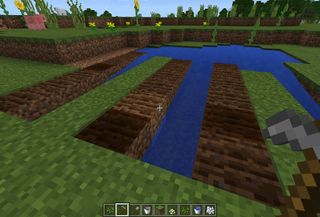
Using your hoe, right-click the tiles you'd like to farm. They will darken if they're hydrated.
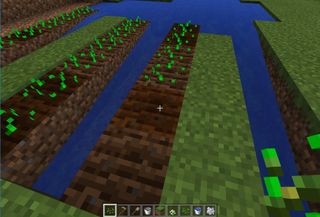
Take out the seeds you collected, and right-click the tilled blocks of dirt. This will plant the seeds, and they will begin to immediately grow.
Water your crops
If you happened to over-extend your crops to where your water source doesn't reach, or if you want to create indoor farms, you can use a bucket to transport water.

The first step, if you haven't already, is to craft a bucket.
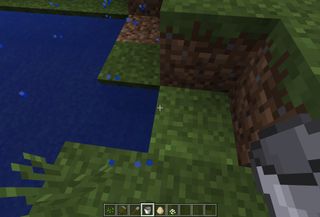
Next, find a source of water that isn't flowing. With your bucket, right-click the water to fill your bucket. You will notice the empty bucket icon changes to a bucket full of water.
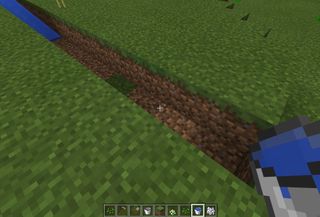
Approach the area of your farm you'd like to water, and right-click the ground — click within a hole to contain the water — to empty the bucket. The water will spread out, watering your crops as it goes.
Fertilize your crops
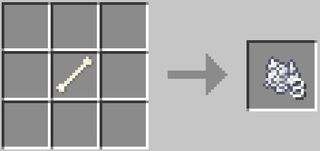
You can use bone meal, which is created from bones, to fertilize and instantly grow your crops. If you don't have any bones in your inventory, wait for night to fall and venture out with a sword and some armor. Kill as many skeletons as you can without dying!
Once you've collected bones and crafted bone meal, right-click with the bone meal on any crops you've already planted. Wheat, potato, and carrot crops will grow anywhere from two to five stages.
Protect your crops
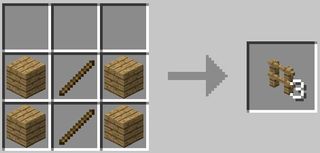
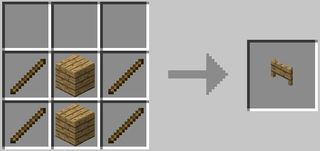
As mentioned, walking on your crops can damage them. This also applies to animals running around your world, so you'll want to create some fences and a gate.
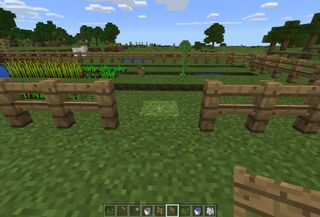
Place fences around the perimeter of your farm, and ensure there are no blocks at the same level nearby — if there are, animals will be able to jump over the fence. Place a gate where it's easy to access.
Give your crops light
If you've created an indoor farm, or if you want to keep your crops growing overnight, you must place torches nearby.
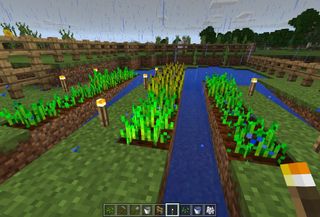
Space out the torches to ensure each block is getting light — you can never have too many!
Know when to harvest
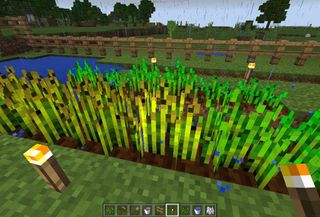
Your crops will go through several stages of growth before they are ready to harvest. If you harvest crops before they're finished growing, they will not provide any wheat.
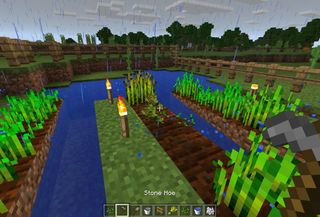
Once the stalks have become dark green and the tips of the wheat have become an almost brown color, they're ready to harvest. Using any tool — or even your hands — click to harvest. Each block will produce one wheat and, usually, some seeds.
Pro-tip: Replant the seeds in the soil before it becomes un-tilled to save time!
Farming other crops than wheat
Cocoa beans
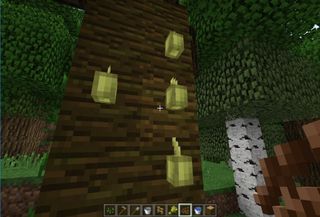
Cocoa beans are usually quite plentiful in jungle biomes — you can find them growing beneath the foliage in trees. Seeds can also be found in dungeon chests. Unlike other crops, cocoa beans must be planted on the side of raw jungle wood. They do not need to be planted near water.
Potatoes, carrots, and beetroot
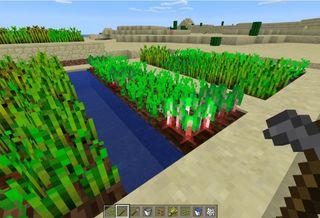
Found growing near NPC villages, potatoes and carrots can be planted and grown just like wheat, except there are no seeds. Plant whole potatoes or carrots in tilled dirt and wait until they're fully grown. When harvested, they will produce more units than you planted.
Beetroot grows near NPC villages as well, however, they will produce seeds when harvested. Replant the seeds to grow more beetroot.
Melons and pumpkins
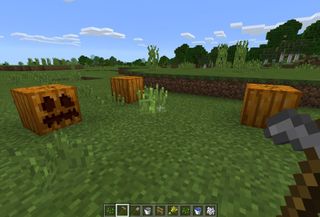
Pumpkins and melons can both be found growing wild, and seeds can be purchased from some NPC villagers. Seeds can also be found in dungeons or abandoned minecart chests. When you plant melon or pumpkin seeds, they will grow and can be harvested. Once you've harvested the pumpkin or melon, the seed will continue to grow anew on the same block of dirt.

Cale Hunt brings to Windows Central more than eight years of experience writing about laptops, PCs, accessories, games, and beyond. If it runs Windows or in some way complements the hardware, there’s a good chance he knows about it, has written about it, or is already busy testing it.